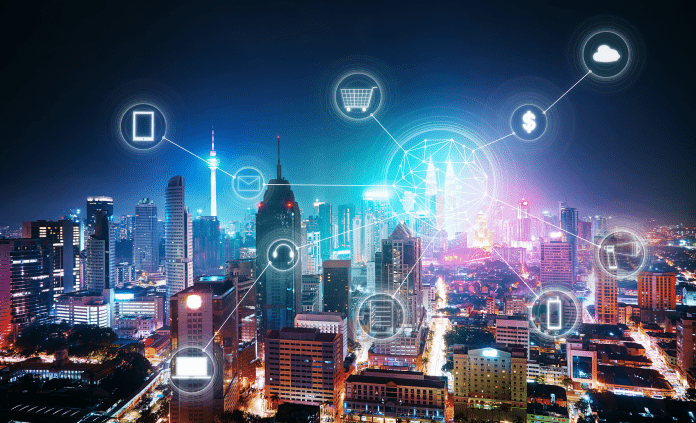Since the start of COVID-19 pandemic, Malaysia has seen an increased, steady demand for digital services. This inevitably resulted in more demand for data, which prompted businesses to start analyzing their data so they can create better products and digital services that cater to the needs of consumers. Furthermore, modern digital infrastructures continue to evolve towards supporting Industry 4.0 technologies, such as Big Data, Artificial Intelligence (AI), and Internet-of-Things (IoT).
In line with the Malaysia Digital Economy (MyDIGITAL) initiative, Malaysia plans to accelerate its digital adoptions to create a conducive environment that benefits society and businesses. MyDIGITAL Blueprint’s main vision is to be a regional leader in the digital economy and achieve inclusive, responsible and sustainable socio-economic development.
The future Malaysia envisioned through MyDIGITAL will see businesses, including micro, small and medium enterprises (MSMEs) that form the backbone of Malaysia’s economy, enjoying greater opportunities to build and expand locally, regionally and even globally through digital revenue streams, with more opportunities to integrate between economic sectors and to be more cost-efficient through shared economy.
The vast amounts of data produced from digitalised activities mean that data centers have a huge role to play in managing and storing them. However, the resultant energy consumption is a cause for concern if it is not managed properly. Therefore, Malaysian businesses need to ensure that their digital infrastructure is managed in a way that ensures long-term sustainability. What does it mean by sustainable digital technologies, and why is it so important to adapt them?
It is crucial for businesses in Malaysia to start building modular data centers, improving their software-defined infrastructure (SDI), and strengthening intelligent management, operation, and maintenance, among other measures; in order to reduce the power consumption of cloud data centers to make them greener and more energy efficient, thus contributing to safeguarding a better living environment.
Modular data centers can equip each transformation module with independent power distribution and refrigeration units, simplify and speed up the construction of data centers, and achieve flexible expansion. As a result, these data centers allow businesses to improve efficiency, save more room, expand flexibly, and cut investment in server rooms and operating costs; making management more efficient and operation and maintenance less expensive.
One of the keys to building green data centers is by providing more efficient computing power and data management capabilities at lower costs and lower energy consumption. This can be achieved by transforming architectures related to computing and storage using a Software-Defined Networking (SDN) solution such as Application-Driven Networking (AD-NET) solution.
As part of AD-NET, Application-Driven Data Center (AD-DC) allows for standalone deployment and out-of-box experience, which helps with the rapid deployment of businesses’ data centers. In addition to adhering to the concepts of cloud and AI-native architecture, and open ecosystem, AD-DC is a great consideration for green and low-carbon development in a data center application scenarios.
Furthermore, green technology like the 400G switch, continues to adopt the classical orthogonal CLOS architecture without central modules, can help in improving the heat dissipation efficiency of the whole data machine while cutting down energy consumption. The most amazing fact is that its single port power consumption is only 20W.
Meanwhile, another green technology like 3D accurate temperature monitoring (with intelligent speed regulation of fans), can help some businesses in distributing airflow according to needs, thus saving energy and reducing noise as much as possible. In addition to these, green technologies also allow for the central processing unit (CPU) and hard disk to be switched to sleep mode for energy conservation according to the running status of the system.
By building and adapting self-healing networks with smart technologies, businesses in Malaysia will be able to realize autonomous optimization, energy conservation and consumption reduction, and self-governance and self-healing when it comes to data management and storage; among other things. It might take a few years for Malaysia to drastically reduce its C02 emission, but with greener technologies being adapted by more businesses in the country, it is possible that we can see positive outcomes in no time.
Moving forward, Malaysia is set to play a leading role in Southeast Asia’s digital advancement, as the country looks to become one of the region’s hubs for data centers. Therefore, the country must ensure that its digital transformation infrastructure and networks are managed sustainably; in addition to embarking on a 5G journey with the aim of nationwide network coverage. The next era of connectivity will initiate opportunities for businesses to expand their innovation and growth that will, in return, offer better services to the public.
By Rockies Ma, General Manager of H3C Malaysia









